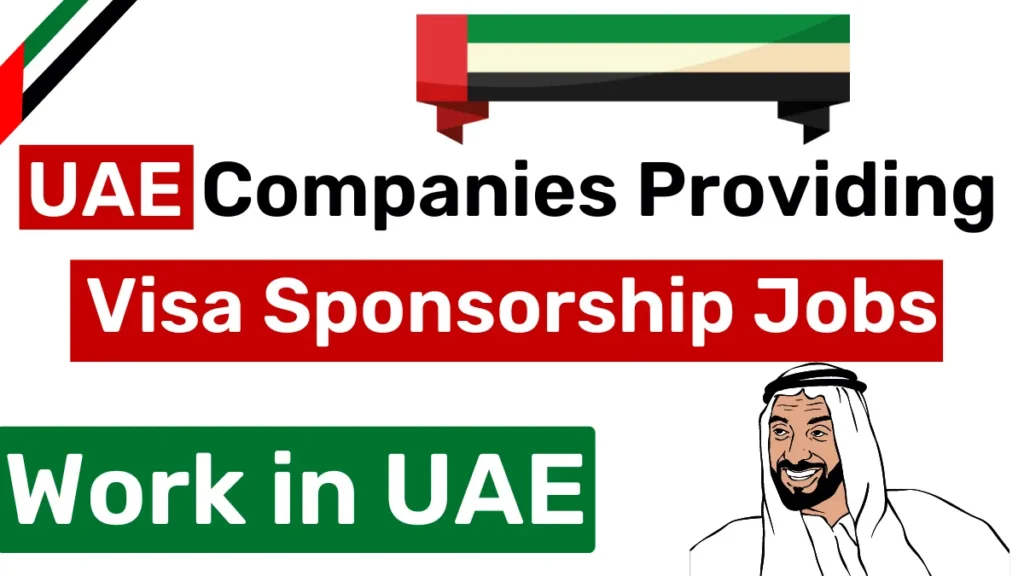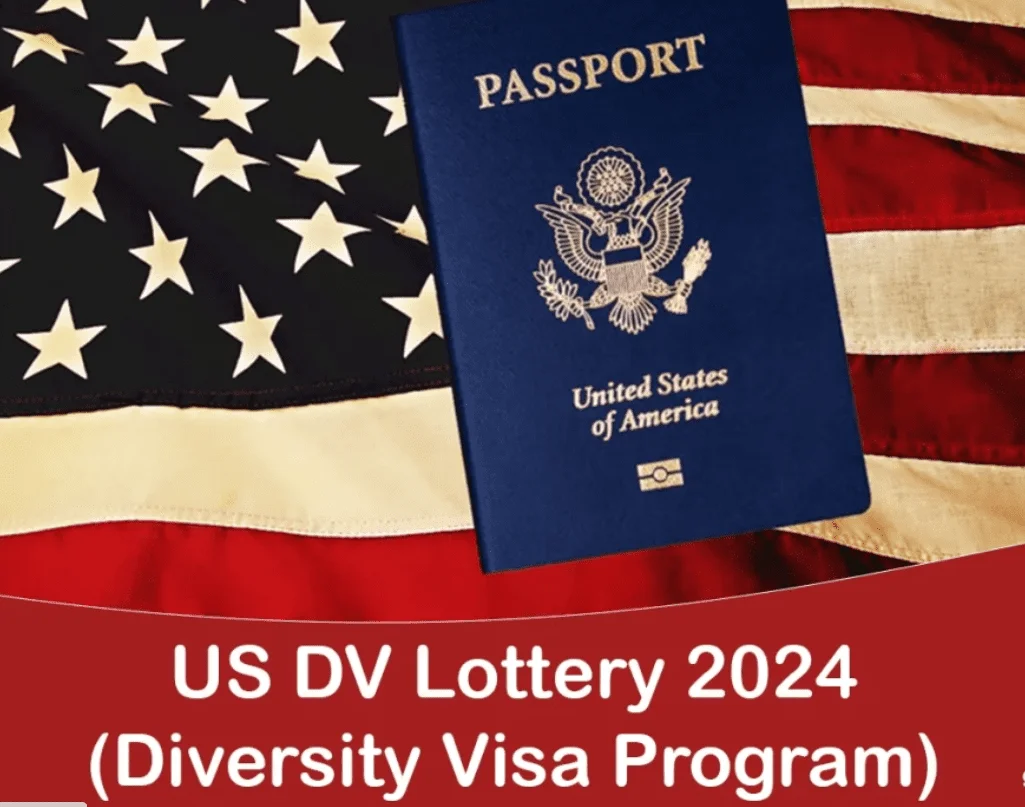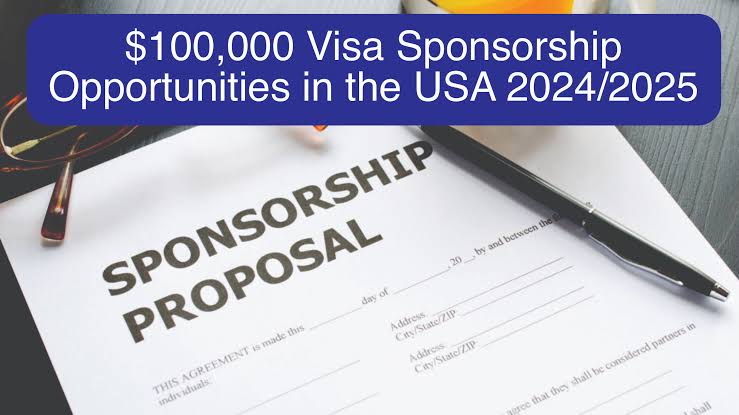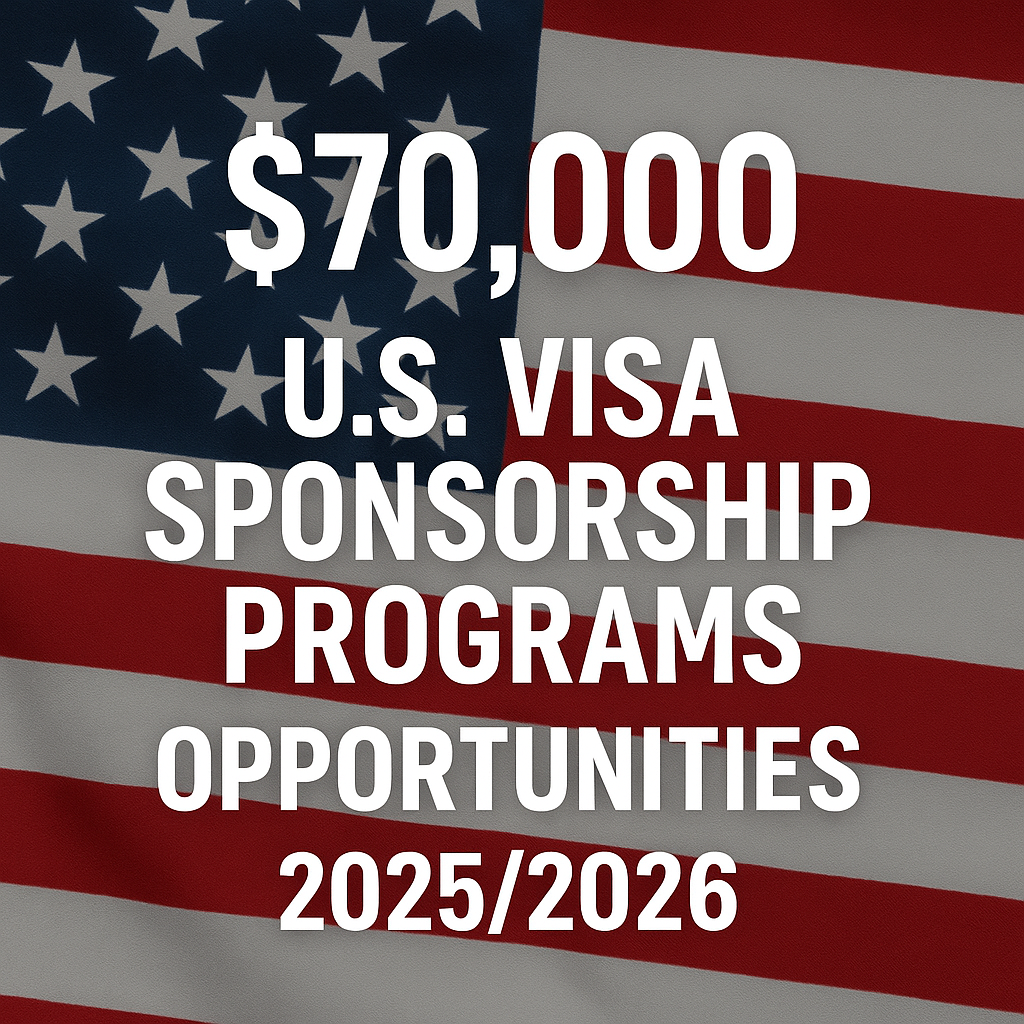The United States remains a beacon of opportunity for professionals worldwide, offering a dynamic job market, competitive salaries, and a chance to live the American Dream. For foreign workers, however, securing a job in the USA often requires navigating the complex world of visa sponsorship. With 2025/2026 on the horizon, understanding USA job grant visa sponsorship opportunities is crucial for those aiming to work legally in the country.
This 4000-word guide provides an in-depth exploration of visa sponsorship in the USA, covering what it is, how it works, employer responsibilities, the step-by-step process, challenges, myths, eligibility criteria, and practical strategies for finding sponsored jobs. Whether you’re a skilled professional, a recent graduate, or an aspiring worker, this article equips you with the knowledge to pursue your career goals in the USA.
What is Visa Sponsorship in the USA?
Visa sponsorship in the USA is the process by which a U.S.-based entity—typically an employer, family member, or organization—supports a foreign national’s application for a visa to live and work legally in the country. For employment purposes, visa sponsorship involves a U.S. employer agreeing to hire a foreign worker and filing necessary documentation with the U.S. Citizenship and Immigration Services (USCIS) to secure a work visa. This process ensures that the foreign worker meets immigration requirements and that the employer complies with U.S. labor and immigration laws.
Sponsorship is a legal commitment. The employer guarantees that the foreign worker will perform the job they were hired for, receive a fair wage, and adhere to visa conditions. Sponsorship is required for most employment-based visas, such as the H-1B, L-1, and EB-3, and is a critical step for foreign nationals who lack permanent residency or U.S. citizenship.
How Visa Sponsorship Works
Visa sponsorship is a multi-step process that involves coordination between the employer, the foreign worker, and U.S. government agencies. Here’s a high-level overview of how it works:
-
Job Offer: The process begins with a U.S. employer offering a job to a foreign worker. The job must align with the worker’s qualifications and the visa category’s requirements.
-
Labor Market Test: For certain visas, like the H-1B, the employer must prove that no qualified U.S. workers are available for the role. This involves posting job ads and submitting a Labor Condition Application (LCA) to the Department of Labor (DOL).
-
Petition Filing: The employer files a petition (e.g., Form I-129 for nonimmigrant visas or Form I-140 for immigrant visas) with USCIS, including supporting documents like the job offer, worker’s credentials, and LCA (if required).
-
USCIS Review: USCIS reviews the petition to ensure compliance with immigration laws. Processing times vary based on visa type and case complexity.
-
Visa Application: If the petition is approved, the foreign worker applies for a visa at a U.S. embassy or consulate, submitting additional forms, fees, and attending an interview.
-
Entry and Employment: Once the visa is granted, the worker can enter the U.S. and begin employment. They must comply with visa terms, such as working only for the sponsoring employer.
This process is employer-driven, meaning the employer initiates and manages most steps. The foreign worker’s role is to provide accurate documentation and meet eligibility criteria.
Employer Responsibilities in Visa Sponsorship
Sponsoring a foreign worker comes with significant responsibilities for U.S. employers. These obligations ensure compliance with immigration and labor laws while protecting both the worker and the U.S. job market. Key responsibilities include:
-
Proving No U.S. Worker Availability: For visas like the H-1B, employers must demonstrate that hiring a foreign worker won’t harm U.S. workers by showing that no qualified Americans applied for the role.
-
Paying Prevailing Wages: Employers must pay the foreign worker at least the prevailing wage for the job, as determined by the DOL, to ensure fair compensation.
-
Covering Fees: Employers are responsible for most visa-related fees, including filing fees, fraud prevention fees, and premium processing costs (if applicable). Some fees, like visa application fees, may be paid by the worker.
-
Filing Accurate Documentation: Employers must submit complete and accurate forms, such as the LCA and Form I-129, to avoid delays or denials.
-
Maintaining Compliance: Employers must notify USCIS of significant changes, such as job termination, and maintain records to prove compliance with visa regulations.
-
Supporting the Worker: Employers often assist with logistical aspects, such as helping the worker obtain a Social Security number or state licenses required for the job.
Failure to meet these responsibilities can result in penalties, visa denials, or loss of future sponsorship privileges.
Steps in the Visa Sponsorship Process
The visa sponsorship process is intricate but follows a clear sequence. Below are the detailed steps for employment-based visa sponsorship in the USA:
-
Secure a Job Offer: Find a U.S. employer willing to sponsor your visa. The job must match your skills and the visa’s requirements (e.g., a bachelor’s degree for H-1B).
-
Labor Certification (if required): The employer files an LCA with the DOL to certify that hiring you won’t negatively impact U.S. workers. This step is mandatory for H-1B and some EB visas.
-
File Petition with USCIS: The employer submits Form I-129 (for nonimmigrant visas like H-1B) or Form I-140 (for immigrant visas like EB-3) to USCIS, along with supporting documents like your educational credentials and the job offer.
-
USCIS Processing: USCIS reviews the petition, which can take weeks to months. Premium processing (for an additional fee) can expedite this step for some visas.
-
Visa Application: If approved, you apply for a visa at a U.S. embassy or consulate. This involves submitting forms (e.g., DS-160), paying fees, and attending an interview where your background and qualifications are reviewed.
-
Visa Issuance: If the consulate approves your application, you receive a visa, allowing you to enter the U.S. and start work.
-
Enter the U.S. and Begin Work: Upon arrival, you may need to apply for a Social Security number and obtain any necessary licenses before starting your job.
Each step requires careful attention to detail, as errors can lead to delays or denials.
Challenges for Foreign Workers
While visa sponsorship opens doors to U.S. employment, foreign workers face several challenges:
-
Competitive Visa Caps: Visas like the H-1B have annual caps (65,000 regular visas plus 20,000 for master’s degree holders in 2025), making them highly competitive. The cap was reached on December 2, 2024, for FY 2025.
-
Processing Delays: Visa processing can take months, especially for complex cases or during high-demand periods, delaying employment start dates.
-
Employer Dependency: Sponsorship ties workers to a specific employer, limiting job mobility. Changing employers often requires a new petition, which can be costly and time-consuming.
-
High Costs: While employers cover most fees, workers may face expenses like visa application fees, travel costs, or legal fees, which can be burdensome.
-
Cultural and Legal Adjustments: Adapting to U.S. workplace culture, navigating legal requirements, and understanding visa conditions can be overwhelming for newcomers.
-
Risk of Denial: Visa denials due to incomplete documentation, ineligibility, or USCIS discretion can disrupt plans and require reapplication or appeals.
Persistence, preparation, and professional guidance (e.g., from immigration attorneys) can help mitigate these challenges.
Common Myths About Visa Sponsorship
Misconceptions about visa sponsorship can deter qualified candidates or lead to costly mistakes. Here are common myths debunked:
-
Myth 1: Any Employer Can Sponsor a Visa: Not all employers are eligible or willing to sponsor visas. Sponsorship requires financial resources, legal compliance, and a job that meets visa criteria.
-
Myth 2: Visa Sponsorship Guarantees Approval: Sponsorship is only the first step; USCIS and consular officers make the final decision, and denials are possible.
-
Myth 3: Sponsorship is Only for High-Skilled Jobs: While H-1B visas target specialty occupations, visas like H-2B (seasonal workers) and EB-3 (skilled and unskilled workers) also require sponsorship.
-
Myth 4: You Can Work Anywhere Once Sponsored: Most sponsored visas restrict you to the sponsoring employer. Working elsewhere without authorization violates visa terms.
-
Myth 5: Sponsorship is a Quick Process: The process can take months or even years, depending on the visa type and USCIS workload.
Understanding these realities helps set realistic expectations and improves your chances of success.
Who Can Sponsor a Work Visa?
Several entities can sponsor work visas in the USA, depending on the visa type:
-
Employers: U.S. companies are the primary sponsors for employment-based visas like H-1B, L-1, and EB-3. They must demonstrate the need for a foreign worker and comply with labor laws.
-
Family Members: U.S. citizens or permanent residents can sponsor family-based visas, which may lead to work authorization (e.g., green cards).
-
Educational Institutions: Universities and schools sponsor student visas (F-1) or exchange visitor visas (J-1), which can sometimes transition to work visas.
-
Nonprofit Organizations: NGOs may sponsor visas for humanitarian or cultural exchange programs, such as J-1 or certain EB-4 categories.
-
Investors: For EB-5 visas, foreign investors can self-sponsor by investing significant capital in a U.S. business that creates jobs.
For employment-based visas, the employer is the most common sponsor, making it essential to target companies with a history of sponsorship.
Which Visa Categories Require Sponsorship?
Numerous U.S. visa categories require sponsorship, each with specific purposes and requirements. Common employment-based visas include:
-
H-1B Visa: For specialty occupations requiring a bachelor’s degree or higher (e.g., IT, engineering, medicine). Limited to 85,000 visas annually.
-
L-1 Visa: For intracompany transferees (managers, executives, or specialized knowledge workers) moving to a U.S. branch of a foreign company.
-
EB-3 Visa: For skilled workers, professionals, and unskilled workers seeking permanent residency. Requires employer sponsorship and labor certification.
-
EB-4 Visa: For special immigrants, such as religious workers or broadcasters, leading to a green card.
-
H-2B Visa: For temporary non-agricultural workers (e.g., hospitality, landscaping). Subject to annual caps.
-
J-1 Visa: For exchange visitors, including interns and trainees, often sponsored by educational or cultural organizations. Can lead to H-1B sponsorship.
Some visas, like EB-1 (extraordinary ability) or EB-2 National Interest Waiver, allow self-petitioning, bypassing employer sponsorship.
Can YOU Get a US Job Sponsorship?
Securing a U.S. job with visa sponsorship depends on meeting eligibility criteria, understanding visa rules, and proactively preparing. Here’s a breakdown:
1. Rules from the USA: The Gatekeepers
The U.S. immigration system, governed by USCIS and the DOL, sets strict rules for visa sponsorship:
-
Job Relevance: The job must match your qualifications and the visa’s requirements (e.g., a bachelor’s degree for H-1B).
-
Employer Eligibility: The employer must be financially stable, offer a legitimate job, and comply with labor laws.
-
No U.S. Worker Displacement: Employers must prove that hiring you won’t harm U.S. workers, often through a labor market test.
-
Compliance: Both you and the employer must adhere to visa terms, such as working only for the sponsor and maintaining valid status.
2. Different Permission Slips (Visas) Have Different Rules
Each visa has unique eligibility criteria:
-
H-1B: Requires a bachelor’s degree or equivalent and a job in a specialty occupation. Highly competitive due to caps.
-
L-1: For employees with at least one year of experience at a foreign branch of a U.S. company.
-
EB-3: Open to skilled workers (2+ years experience), professionals (bachelor’s degree), or unskilled workers. Requires labor certification.
-
J-1: Ideal for interns or trainees, often a stepping stone to H-1B sponsorship.
3. Other Things to Think About
Beyond eligibility, consider:
-
Industry Demand: Tech, healthcare, engineering, and finance industries are more likely to sponsor visas due to skill shortages.
-
Timing: Visa caps (e.g., H-1B) mean early application is critical. The FY 2025 H-1B cap was reached in December 2024.
-
Networking: Building connections with U.S. employers through LinkedIn or industry events increases your chances.
-
Legal Support: Immigration attorneys can guide you through complex requirements, reducing the risk of errors.
Figuring Out If You’re Eligible: Be Proactive!
To determine your eligibility for visa sponsorship:
-
Assess Your Qualifications: Ensure your education, skills, and experience align with the job and visa requirements. For example, H-1B requires a bachelor’s degree or equivalent.
-
Research Visa Options: Explore visas that match your career goals (e.g., H-1B for tech professionals, EB-3 for skilled workers). Use resources like USCIS.gov or MyVisaJobs.com.
-
Check Employer Sponsorship History: Use platforms like MyVisaJobs.com to identify companies that have sponsored visas in your field.
-
Consult an Immigration Attorney: Legal experts can evaluate your eligibility and recommend the best visa path.
Proactivity is key. Start early, research thoroughly, and tailor your applications to stand out.
Gathering Your Documents: Your Visa Application Checklist
A successful visa application requires meticulous documentation. Below is a checklist of common documents:
-
Valid Passport: Must be valid for at least six months beyond your intended stay.
-
Job Offer Letter: A detailed letter from the employer outlining the job role, salary, and sponsorship commitment.
-
Educational Credentials: Degrees, diplomas, or transcripts, often with evaluations to confirm U.S. equivalency.
-
Work Experience Letters: Letters from previous employers verifying your experience, especially for L-1 or EB-3 visas.
-
Resume/CV: A professional summary of your skills, education, and experience.
-
Form DS-160 Confirmation: Required for visa applications at U.S. consulates.
-
Passport-Sized Photos: Meeting U.S. visa photo requirements.
-
Labor Condition Application (LCA): Provided by the employer for H-1B and similar visas.
-
Petition Approval Notice: USCIS approval of the employer’s petition (e.g., I-797 for Form I-129).
-
Visa Application Fee Receipt: Proof of payment for visa processing fees.
-
Additional Documents: Depending on the visa, you may need certifications, licenses, or proof of extraordinary ability (for O-1 or EB-1).
Important Things to Remember About Documents
-
Accuracy: Ensure all information is consistent across documents to avoid delays or denials.
-
Translations: Non-English documents must be translated by a certified translator.
-
Copies and Originals: Bring originals to interviews but submit copies unless requested.
-
Organize: Use a checklist to track documents and meet deadlines.
-
Backup: Keep digital and physical copies of all documents for reference.
Getting That Sponsored Job: Finding US Visa Sponsorship Jobs
Securing a job with visa sponsorship requires strategic searching and persistence. Here are smart ways to find opportunities:
-
Use Specialized Job Boards: Platforms like MyVisaJobs.com, VisaSponsor.jobs, and ZipRecruiter list jobs explicitly offering visa sponsorship.
-
Target Sponsoring Companies: Research companies with a history of sponsoring visas, such as tech giants (Google, Amazon), healthcare providers, or engineering firms. Check H-1B data on MyVisaJobs.com.
-
Leverage Recruitment Agencies: Agencies specializing in international talent can connect you with employers open to sponsorship.
-
Network Actively: Attend industry conferences, join LinkedIn groups, and connect with professionals in your field. Alumni networks and informational interviews can uncover opportunities.
-
Apply for Internships or J-1 Programs: Starting with a J-1 visa internship can lead to H-1B sponsorship, especially with employers familiar with the process.
-
Tailor Your Applications: Highlight skills in high-demand fields (e.g., AI, nursing, engineering) and address visa sponsorship in cover letters confidently.
-
Monitor Government Programs: Programs like the J-1 Exchange Visitor Program or H-2B offer sponsorship opportunities for specific roles.
Persistence and a targeted approach are essential. Focus on industries and employers with a track record of hiring international talent.
Conclusion: Your Path to Working in the USA
Securing a U.S. job with visa sponsorship in 2025/2026 is a challenging but achievable goal. By understanding the sponsorship process, employer responsibilities, eligibility criteria, and strategic job search methods, you can position yourself for success. Despite challenges like visa caps and processing delays, proactive preparation—through networking, skill development, and thorough documentation—can open doors to rewarding opportunities.
Start your journey today by researching visa options, identifying sponsoring employers, and building a strong professional profile. The American Dream awaits those who are prepared to navigate the path with determination and clarity.



